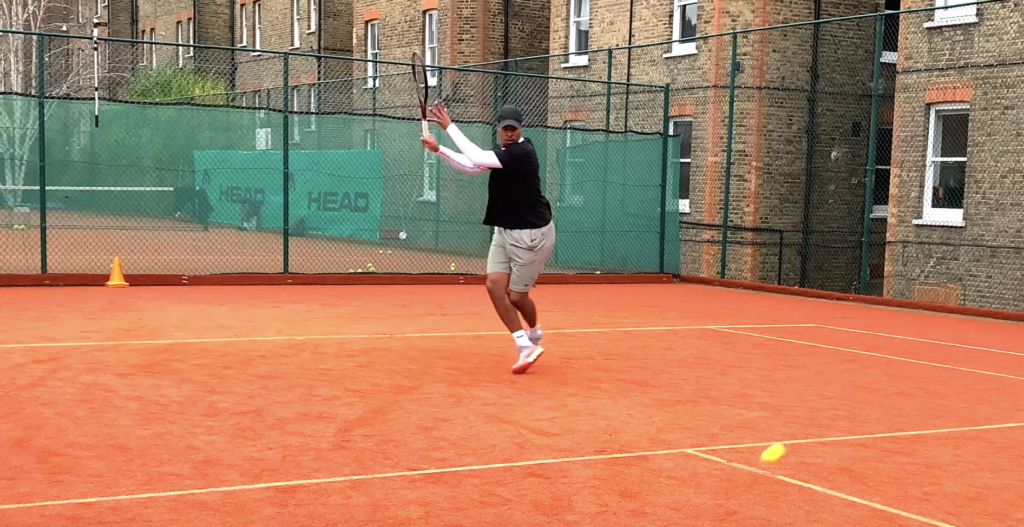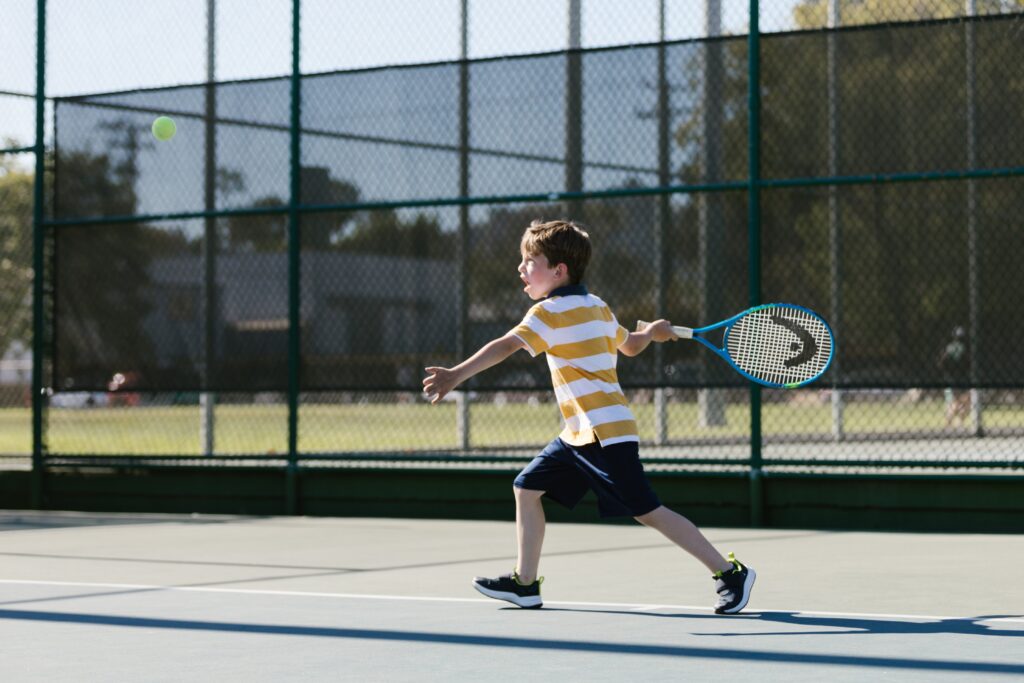What a comprehensive breakdown for perfecting the forehand in tennis! Each step is crucial for developing a strong and effective forehand. Let’s elaborate on some key points:
Step 1 – Grip Strategy
Selecting the right tennis grip is not just about personal comfort but a strategic decision that can shape the entire game. The semi-western grip, known for its spin and power capabilities, is a versatile choice embraced by players across skill levels. Its adaptability to various playing conditions and shot types makes it a popular option. Exploring alternatives like the eastern and full western grips adds flexibility, allowing players to tailor their grip choices for specific on-court situations.
The semi-western grip, positioned between the eastern and full western grips, provides balance, making it effective for diverse shots. With moderate spin and power, it suits players thriving in all-court play. Its popularity is evident among top professionals who value its adaptability.

The eastern grip favors a flatter trajectory, ideal for players wanting to drive the ball with minimal spin. It suits those aiming for a faster, aggressive style of play, allowing them to dictate the rally’s pace.
Conversely, the full western grip enables heavy topspin, creating a challenging ball trajectory for opponents. With an extreme upward swing, it enhances spin control, consistency, and bounce characteristics.
Developing proficiency with semi-western, eastern, and full western grips provides strategic advantages, allowing players to adapt to diverse conditions, opponent styles, and match scenarios. This strategic step involves transitioning seamlessly between grips, enhancing a player’s ability to navigate tennis dynamics effectively.

In essence, grip selection in tennis requires a comprehensive understanding of how each grip influences shot characteristics, extending beyond personal comfort to strategic considerations.
Step 2 – Forehand Maneuver
Viewing the forehand as a strategic manoeuvre, not just a stroke, elevates its significance in a player’s game. Beyond a hitting motion, it becomes a calculated play where every element is orchestrated for a desired outcome. Recognising the non-hitting arm as crucial for coordination adds depth to this strategic approach.
A well-executed forehand involves dynamic elements beyond power generation. The coordinated turn of hips and shoulders, complemented by a subtle knee bend, creates torque, adding power and control. It’s a balance of force and finesse mastered by top players.
Analogously, envisioning the player as a captain steering a ship adds finesse to the forehand. Maintaining a steady head serves as a focal point for control and balance, allowing accurate shot direction. Reading the ‘tennis terrain’ like a captain reads the seas, players adjust their stroke technique based on court conditions and opponent play.

Step 3 – Power and Precision
Incorporating the legs as a powerhouse adds athleticism to the forehand stroke, emphasizing the role of the lower body in generating energy through the kinetic chain. Leg strength, agility, and proper footwork become crucial for enhancing the forehand’s overall effectiveness and power.
Strategically, striking the ball in front of the body is not just about timing; it’s a deliberate effort to maximise the shot’s impact. Optimal contact in this position allows players to harness the full force generated by the kinetic chain, resulting in a potent and controlled forehand.
Maintaining a relaxed grip facilitates efficient energy transfer through the kinetic chain. A loose grip ensures minimal resistance, allowing the energy from the lower body to seamlessly flow into the racket head. This transfer of energy influences the speed of the racket head, ultimately impacting the force with which the ball is struck.

A relaxed arm complements the loose grip, contributing to a fluid motion. Controlled relaxation from the shoulder to the fingertips enhances swing speed and ensures the sustainability of stroke mechanics.
This transformative approach blends power, accuracy, and timing, making the forehand a holistic, full-body motion. The legs act as the powerhouse, initiating the kinetic chain, while optimal contact maximises shot effectiveness. A relaxed grip and arm contribute to fluidity, creating a well-rounded forehand technique that transcends mere stroke mechanics.
Step 4 – The Finish
The follow-through in a tennis forehand is more than a technicality; it serves as the expressive conclusion to a well-crafted shot. Executing a precise follow-through, including ensuring the chin meets the shoulder and transitioning smoothly to the ready position, reflects dedication to technique and mastery.

The follow-through is a tactical punctuation mark, signifying the strategic conclusion of a forehand sequence. It communicates confidence, indicating intention and precision in the shot. In the metaphorical language of tennis, the follow-through denotes the end of one thought and the beginning of the next, contributing to the rhythm and flow of the player’s game.
Players dedicating time to refine their follow-through elevate their game, turning it into an artistic expression and a purposeful conclusion to the narrative on the court. The follow-through becomes a captivating statement, resonating with technical prowess and strategic sophistication in high-level tennis.
Make It Your Own
Encouraging players to experiment invites a journey of self-discovery on the tennis court. Recognising the dynamic nature of the sport, players are urged to express themselves, blending power, spin, and finesse to create a unique signature shot. This step is about cultivating a personal style that becomes a trademark on the tennis court, transcending mere skill development into an art form.

In conclusion, perfecting the forehand in tennis is not a linear process; it’s a multifaceted exploration of technique, strategy, and personal expression. Each step in this breakdown is not just a checkpoint but a realm for players to delve into, refining their skills and sculpting their identity on the court. The forehand, when approached with this depth, becomes more than a shot—it becomes a statement, a personalised masterpiece in the game of tennis.
[Check out our recent review on selecting the right tennis ball for you]

Hi, this is a comment.
To get started with moderating, editing, and deleting comments, please visit the Comments screen in the dashboard.
Commenter avatars come from Gravatar.